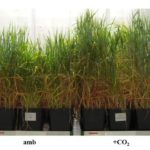Daily Archives:May 3, 2016
Osteoporosis and erythroid cells: is there a connection?
Faceted liquid droplets wag their tails
Neurocysticercosis
Swiss physicians’ perspectives on advance directives in elective cardiovascular surgery
Older Australians in nursing homes have limited access to complementary medicines for pain relief
In Australia and elsewhere, older people living in the community use complementary medicines (CM) to manage the symptoms of chronic illnesses, especially pain, and to supplement ‘conventional’ medical treatments for the same conditions. The bulk of CM











